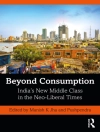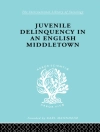‘This is a book that should be read by anyone interested in class, inequality, poverty and politics. Actually, probably more importantly it should be read by people who think that those things do not matter! It provides a wonderful summation of the huge amount of work on these topics that now exists and it also offers its own distinctive perspectives on a set of issues that are – despite the claims of some influential commentators – still central to the sociological enterprise and, indeed to political life.’
– Roger Burrows, University of York
‘A clear and compelling analysis of the dynamics of social and spatial inequality in an era of globalisation. This is an invaluable resource for students and scholars in sociology, human geography and the social sciences more generally.’
– Gary Bridge, University of Bristol
With the declining attention paid to social class in sociology, how can we analyze continuing and pervasive socio-economic inequality? What is the impact of recent developments in sociology on how we should understand disadvantage?
Moving beyond the traditional dichotomies of social theory, this book brings the study of social stratification and inequality into the 21st century. Starting with the widely agreed ′fact′ that the world is becoming more unequal, this book brings together the ′identity of displacement′ in sociology and the ′spaces of flow′ of geography to show how place has become an increasingly important focus for understanding new trends in social inquality.
สารบัญ
Chapter 1: Introduction
Chapter 2: Modernity, Postmodernity and Globalization
The end of certainty
The Enlightenment ′project′, modernity and postmodernity
Globalization
Models of globalization
Globalization and migration
Chapter 3: The Collar Line and Urban Boundaries
Collars and classes
Work and stratification in post-war Britain
Class theory in British post-war sociology
The Marxist response to sociology
Urban boundaries
Chapter 4: The Aftermath of Affluence
Dual labour markets
Marxism and the labour process
Restructuring and the collapse of work
The new space economy
Emerging spatial divisions of labour and capitalist transformations
Whatever happened to the collar line?
Chapter 5: New Spatial and Social Divisions of Labour
World cities
Los Angeles and the ′LA School′
Social polarization
Gentrification and the urban-seeking middle classes
The ghetto and the urban underclass
Methodology and urban social polarization
Chapter 6: Poverty, Social Exclusion and the Welfare State
Welfare state regimes
Poverty and social exclusion
Poverty in the United States
Poverty and social exclusion in Britain
Poverty and social exclusion in Europe
Towards a liberal welfare convergence?
Chapter 7: New Work and New Workers
New work
Fast food workers – flipping burgers in the globally branded restaurant
Call centres – taking calls in the interactive service factory
Paid domestic workers – caring and cleaning in global cities
Cash-in-hand jobs – informal work in marginal localities
Young people – working and playing in a restructured region
Chapter 8: Class Identity
Class interests
From class consciousness to class identity
The French connection – Bourdieu
Debating class identity
Identity and organization












